Geography skills
OS map skills
Revise how to read and understand Ordnance Survey maps with this ≥…»ÀøÏ ÷ Bitesize Scotland geography revision guide for Fourth Level in Scotland's CfE.

Data shown on maps
Different maps can show geographical data in different ways. Chloropleth maps use shades of colour to show variations in data over wide areas. Isoline maps join places that share a value. Dot maps can show distribution or density. Proportional symbol maps show different values with changing sizes of circles or other symbols.
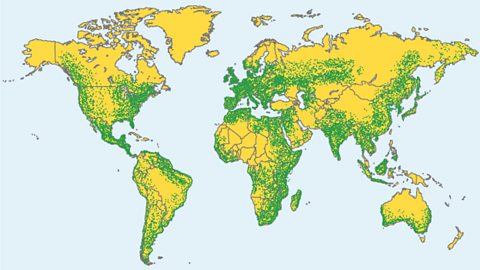
Data shown on graphs
Line graphs, bar charts, population pyramids and climate graphs can all be used to present geographical information. It is important to know how to extract and interpret the most useful information from these.

Sustainability
UN Sustainable Development Goal 1: No poverty
Around 10 percent of the world’s population, or 734 million people, live on less than $1.90 a day. To build a sustainable and fair future for the world, the UN has made ending poverty its first goal.

UN Sustainable Development Goal 2: No hunger
Around the world, hunger and limited access to food is still a major problem for millions of people. Ending hunger so that all people have the nutrition they need is one of the 17 UN Sustainable Development Goals.

UN Sustainable Development Goal 3: Good health and wellbeing
Good health and wellbeing add to people's quality of life and help them live longer. Disease and lack of access to healthcare can limit people's lives and prevent them from contributing to their community. Lifestyle can have either a positive or negative impact on physical and mental health.

UN Sustainable Development Goal 4: Quality education
The UN recognises education as crucially important in helping people escape poverty and giving them the tools to build a better life for themselves. In some parts of the world access to education is still a problem.

UN Sustainable Development Goal 5: Gender equality
The UN recognises gender equality as a fundamental human right. Across the world women and girls are still denied equal rights as males and still experience discrimination.

UN Sustainable Development Goal 6: Clean water and sanitation
Globally, billions of people do not have access to clean water and working sanitation. As well as thirst, lack of access to clean water can cause the spread of waterborne diseases.

UN Sustainable Development Goal 7: Affordable and clean energy
While the world is moving to adopt clean, renewable energy sources, many developing nations still struggle to get access to reliable electricity and safe cooking and heating fuels.

UN Sustainable Development Goal 8: Decent work and economic growth
The UN recognises the importance of safe, rewarding jobs that pay enough to allow people to live fulfilling lives. There are still many nations where people struggle to earn a living or face terrible working conditions.

UN Sustainable Development Goal 9: Industry and infrastructure
The UN recognises the role of industry, innovation and infrastructure in making our societies flexible and progressive. Now more than ever these things need joined up thinking to ensure they are future proof with sustainability at heart.

UN Sustainable Development Goal 10: Reduced inequalities
The UN recognises the importance of protecting the most vulnerable people and the right for all to live fulfilling lives. Many people around the world face inequality because of their gender, race, sexuality, or because they have a disability.

UN Sustainable Development Goal 11: Sustainable cities and communities
More than half of the world's population live in cities. Housing, transport and services need to be sustainable to improve the quality of people's lives and to minimise climate change.

UN Sustainable Development Goal 12: Responsible production/consumption
Everything we produce and consume has an impact on the environment. To live sustainably we need to reduce the resources we use and the amount of waste we produce. There's a long way to go but there are already improvements and reasons to be hopeful.

UN Sustainable Development Goal 13: Climate action
Climate change is already affecting every country around the world. We all need to act to limit how much the climate changes and to cope with its effects.
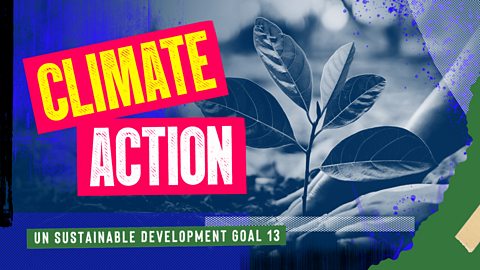
UN Sustainable Development Goal 14: Life below water
People around the world rely on the oceans, seas and rivers for water, food and sometimes their livelihood. Oceans help shape our climate and capture large amounts of carbon dioxide from the atmosphere.

UN Sustainable Development Goal 15: Life on land
Climate change and human activity threaten ecosystems across the planet. We need to live more sustainably to protect species from extinction and to preserve our own lives, health, food and jobs.
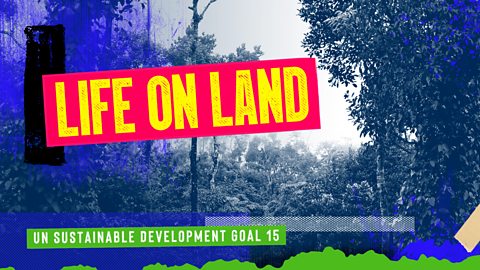
UN Sustainable Development Goal 16: Peace, justice, and institutions
The UN recognises the important role that justice, peace, and strong institutions have in delivering all of the Sustainable Development Goals. Honest and fair governments and legal institutions are essential to protecting and promoting human rights.

UN Sustainable Development Goal 17: Partnerships for the goals
The UN recognises the importance of people powered networks which can make a difference implementing the aims of all of the sustainable development goals at both a local and global level.

Rainforest sustainability - Costa Rica. Video
How sustainable farming techniques help rainforest conservation in Costa Rica.
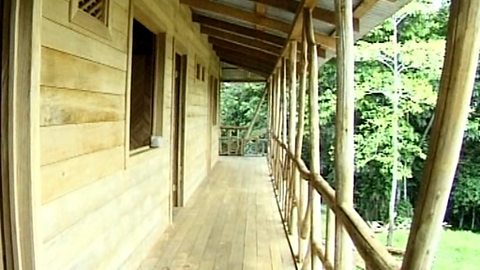
Weather and climate
What is weather and climate?
Weather describes the day-to-day condition of the atmosphere. Climate describes average weather conditions over longer periods and over large areas.

Weather in the UK
The UK's changeable weather is affected by five air masses. Different weather systems, depressions and anticyclones bring different weather conditions.
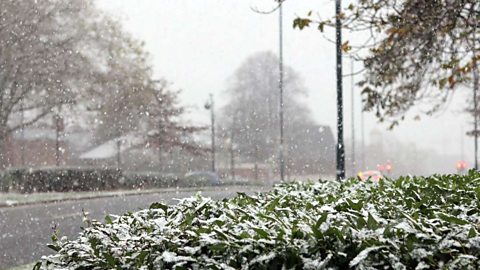
Climate zones of the world
The Equator is closer to the sun than the poles and receives sunlight more directly and all year round. This results in different climate zones in different parts of the Earth having different climate conditions.
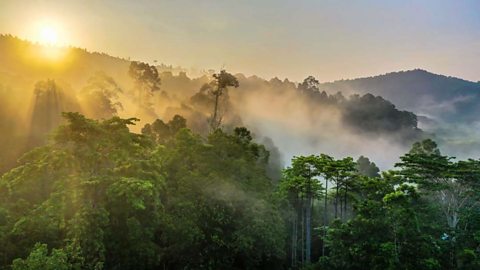
Tropical desert regions of the world
Tropical deserts are hot and dry with summer and winter seasons. They have wide variation in daily temperature. They are home to many different animals and plants that have adapted to survive in the hot, dry conditions.

Tropical rainforest regions of the world
Rainforests are located in the tropical climate region. They are hot and wet all year round – this creates a humid climate. Rainforests contain an enormous variety of plants and animals – approximately 90 per cent of all of the world's species.
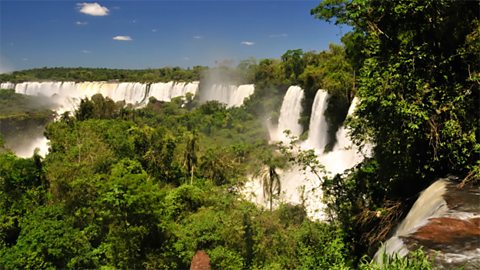
Tundra regions of the world
The tundra climate region are found in the Arctic and Antarctic. They are very cold and have little precipitation. Plants and animals have adapted to stay warm and preserve water.

- 3 videos
